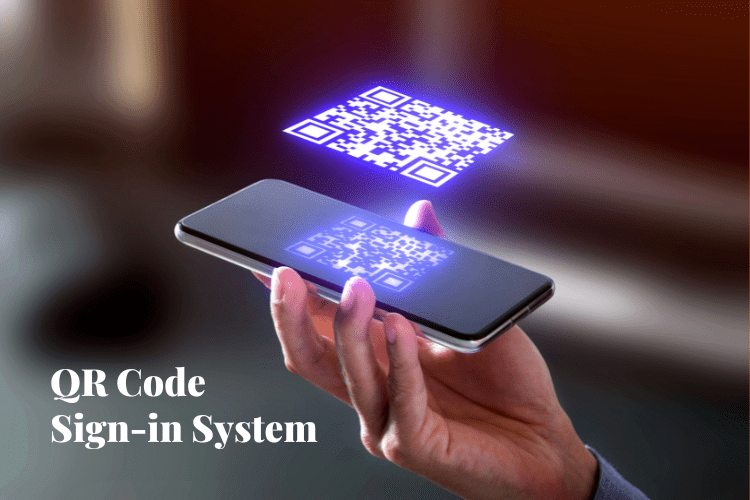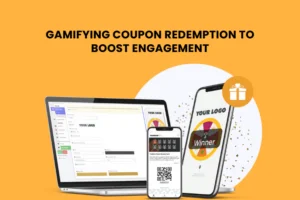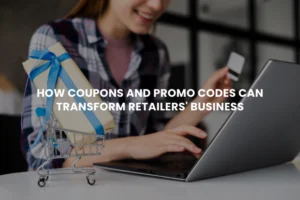
Undoubtedly, we live in a mobile-first world. From booking tickets to managing work calls and projects, you can possibly do everything from a mobile phone. Who would have imagined that you could place a food order through a mobile app and get it delivered to your doorstep? Nevertheless, the pandemic has catalyzed the restaurant industry, changing how restaurants operate and interact with customers. Customers increasingly use their smartphones to search for restaurants, browse menus, and make reservations.
Contactless order and delivery are not limited to online operations; it also helps transform the dining experience. One of the breakthroughs in the restaurant and club industry was QR code menus. These are digital menus that customers can access by simply scanning the QR code from their smartphones.
Revolution of QR QR–known for “quick response,” facilitates social distancing and sanitization. Though we are (currently) free from the clutches of the pandemic, most restaurants stick to QR code menus because they are simple and fast, improve the menu browsing experience, and reduce printing costs.
However, QR codes have evolved from just menus to providing a value-added experience to customers at restaurants and clubs. For example, after scanning the menu, customers can place an order and pay from their mobile phones. Even for making the payment, QR codes are now a norm! No more waiting for the bill, swiping the card, again waiting for the acknowledgment, etc. Just scan and pay!
Another way QR codes are being used is to provide access to sign-up for loyalty programs and reward customers for their patronage. Digital coupons and loyalty programs are convenient for customers, and customers can quickly join the loyalty program and earn rewards by scanning a QR code with their mobile devices. This eliminates the need for physical coupons or loyalty cards and creates a seamless customer experience.
Above all, adding gamification offers an engaging experience for customers. By incorporating game elements such as point systems, progress bars, and virtual rewards, customers are motivated to participate in the loyalty program and earn rewards.
QR Codes for Sign-in at Restaurants and Clubs Another emerging trend is using QR codes to provide a faster, more efficient, and more secure way of managing customer entry. By using QR codes and an app, clubs can ensure faster walk-ins and simplify the entry process without human intervention.
Using QR codes for entry is a simple process. Customers are issued a unique QR code linked to their account on the mobile app. When they arrive at the club, all they need to do is scan the QR code at the entrance using the designated app. The app will then verify the code and allow them entry. Traditionally, clubs have relied on security guards to check people’s identification. This process can be time-consuming, often leading to long lines outside the club. With QR codes, however, clubs can streamline the entry process and make it faster and more efficient.
Highly Secure QR codes are also very secure as they are encrypted, and customers have the codes in their smartphones, which are always with them, unlike physical cards that customers can give away or get stolen. Restaurants can use designated software like OptCulture to set the validity of the QR code to be available for scanning for 20 seconds. In this time frame, customers do not have enough time to pass the phone to their friends and give them entry access, eliminating the challenge of multi-person entry.
The app can be programmed only to allow entry to those with valid QR codes and to flag any suspicious activity or attempts to enter using fake codes. It can notify security personnel if any suspicious activity is detected, allowing them to intervene if necessary.
Easy Loyalty Program Sign-up QR code sign-in systems are also an efficient way to boost loyalty programs. Customers can scan their QR code each time they visit the venue, earning points or rewards for their loyalty. This incentivizes customers to return and make more purchases, creating a loyal customer base. The use of QR codes can provide clubs with valuable data on customer behavior and preferences. By tracking which customers enter the club and when clubs can better understand customer needs and adjust their offerings accordingly. They can provide a more personalized experience to customers, enhancing their overall satisfaction with the club.
They can then offer discounts or promotions, encouraging customers to return and providing a more interactive experience. It creates a sense of community and loyalty among customers, strengthening the relationship between the club and its patrons.
After scanning the QR code, the kiosk screen can give customer details, reward points, last visit details, etc. It’s up to brands how they can leverage QR code systems and make them more convenient for customers.
OptCulture offers highly reliable access control solutions to engage with customers and offers convenience most interactively. The best part is that this feature works offline–members can still enter and access the club if there is any network disconnect.
By improving entry efficiency, security, and overall customer experience, clubs can create a more enjoyable and memorable experience for their patrons. With the added benefits of data collection and engagement opportunities, QR codes provide a valuable tool for clubs looking to enhance their operations and create a loyal customer base.
Contactless order and delivery are not limited to online operations; it also helps transform the dining experience. One of the breakthroughs in the restaurant and club industry was QR code menus. These are digital menus that customers can access by simply scanning the QR code from their smartphones.
Revolution of QR QR–known for “quick response,” facilitates social distancing and sanitization. Though we are (currently) free from the clutches of the pandemic, most restaurants stick to QR code menus because they are simple and fast, improve the menu browsing experience, and reduce printing costs.
However, QR codes have evolved from just menus to providing a value-added experience to customers at restaurants and clubs. For example, after scanning the menu, customers can place an order and pay from their mobile phones. Even for making the payment, QR codes are now a norm! No more waiting for the bill, swiping the card, again waiting for the acknowledgment, etc. Just scan and pay!
Another way QR codes are being used is to provide access to sign-up for loyalty programs and reward customers for their patronage. Digital coupons and loyalty programs are convenient for customers, and customers can quickly join the loyalty program and earn rewards by scanning a QR code with their mobile devices. This eliminates the need for physical coupons or loyalty cards and creates a seamless customer experience.
Above all, adding gamification offers an engaging experience for customers. By incorporating game elements such as point systems, progress bars, and virtual rewards, customers are motivated to participate in the loyalty program and earn rewards.
QR Codes for Sign-in at Restaurants and Clubs Another emerging trend is using QR codes to provide a faster, more efficient, and more secure way of managing customer entry. By using QR codes and an app, clubs can ensure faster walk-ins and simplify the entry process without human intervention.
Using QR codes for entry is a simple process. Customers are issued a unique QR code linked to their account on the mobile app. When they arrive at the club, all they need to do is scan the QR code at the entrance using the designated app. The app will then verify the code and allow them entry. Traditionally, clubs have relied on security guards to check people’s identification. This process can be time-consuming, often leading to long lines outside the club. With QR codes, however, clubs can streamline the entry process and make it faster and more efficient.
Highly Secure QR codes are also very secure as they are encrypted, and customers have the codes in their smartphones, which are always with them, unlike physical cards that customers can give away or get stolen. Restaurants can use designated software like OptCulture to set the validity of the QR code to be available for scanning for 20 seconds. In this time frame, customers do not have enough time to pass the phone to their friends and give them entry access, eliminating the challenge of multi-person entry.
The app can be programmed only to allow entry to those with valid QR codes and to flag any suspicious activity or attempts to enter using fake codes. It can notify security personnel if any suspicious activity is detected, allowing them to intervene if necessary.
Easy Loyalty Program Sign-up QR code sign-in systems are also an efficient way to boost loyalty programs. Customers can scan their QR code each time they visit the venue, earning points or rewards for their loyalty. This incentivizes customers to return and make more purchases, creating a loyal customer base. The use of QR codes can provide clubs with valuable data on customer behavior and preferences. By tracking which customers enter the club and when clubs can better understand customer needs and adjust their offerings accordingly. They can provide a more personalized experience to customers, enhancing their overall satisfaction with the club.
They can then offer discounts or promotions, encouraging customers to return and providing a more interactive experience. It creates a sense of community and loyalty among customers, strengthening the relationship between the club and its patrons.
After scanning the QR code, the kiosk screen can give customer details, reward points, last visit details, etc. It’s up to brands how they can leverage QR code systems and make them more convenient for customers.
OptCulture offers highly reliable access control solutions to engage with customers and offers convenience most interactively. The best part is that this feature works offline–members can still enter and access the club if there is any network disconnect.
By improving entry efficiency, security, and overall customer experience, clubs can create a more enjoyable and memorable experience for their patrons. With the added benefits of data collection and engagement opportunities, QR codes provide a valuable tool for clubs looking to enhance their operations and create a loyal customer base.
Latest Posts
How to Create a Successful Gift Card Rewards Program for Customer Retention
October 17, 2024
How to Create a Successful Gift Card Rewards Program for...
The Importance of Loyalty Benefits: How Discounts and Promo Codes Drive Customer Retention
October 16, 2024
The Importance of Loyalty Benefits: How Discounts and Promo Codes...
Gamifying Coupon Redemption to Boost Engagement
October 16, 2024
Gamifying Coupon Redemption to Boost Engagement In today's crowded...
Reducing Customer Churn with Retargeting Promo Codes
October 16, 2024
Reducing Customer Churn with Retargeting Promo Codes In retail,...
How Coupons and Promo Codes Can Transform Retailers’ Business
October 16, 2024
How Coupons and Promo Codes Can Transform Retailers' Business ...




